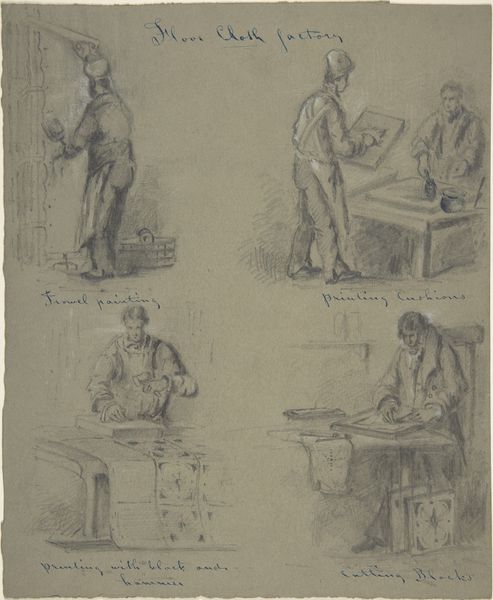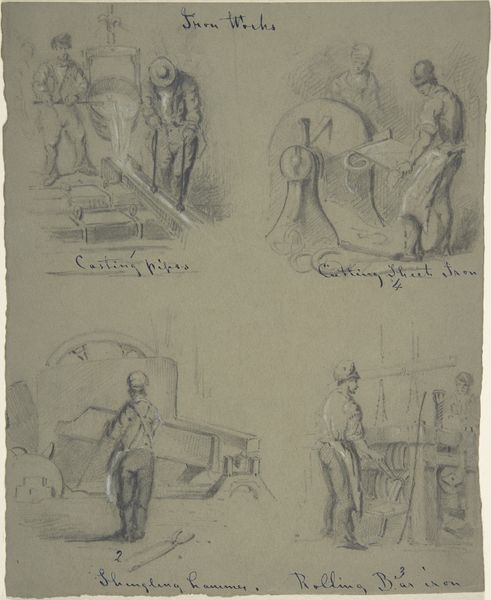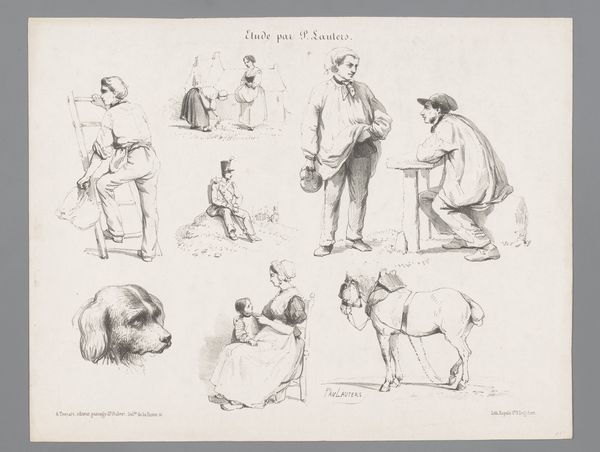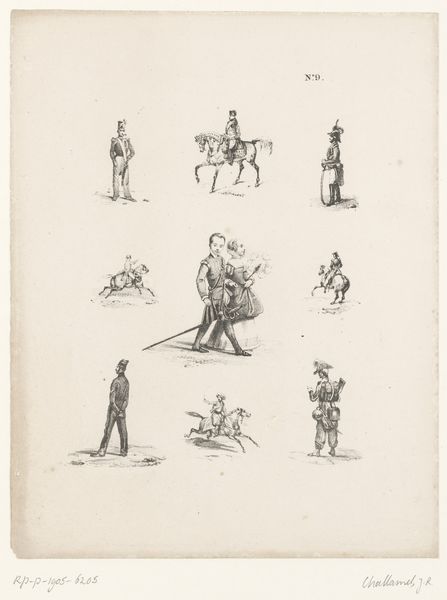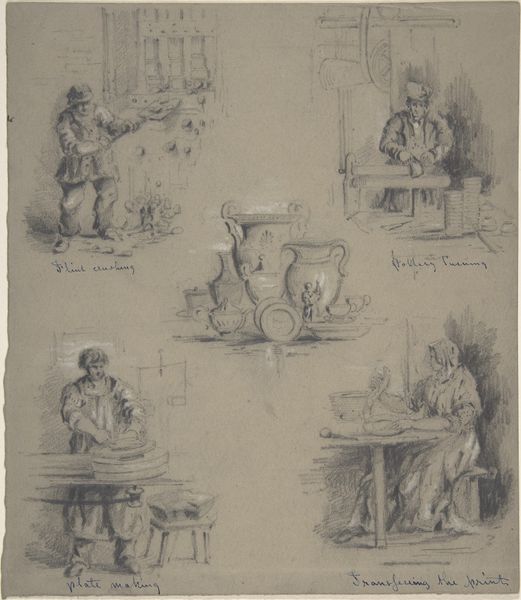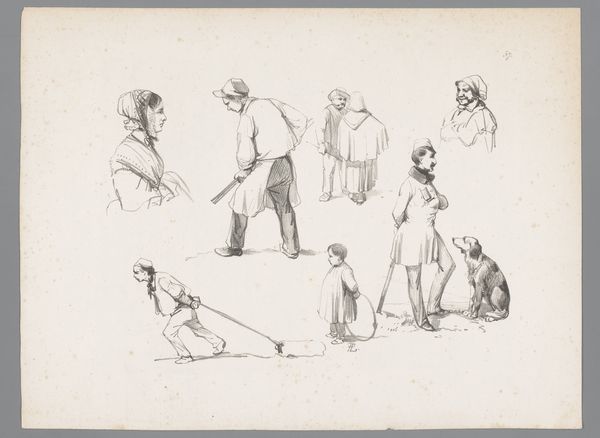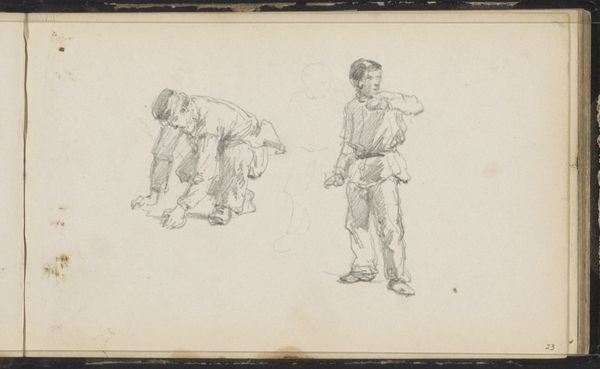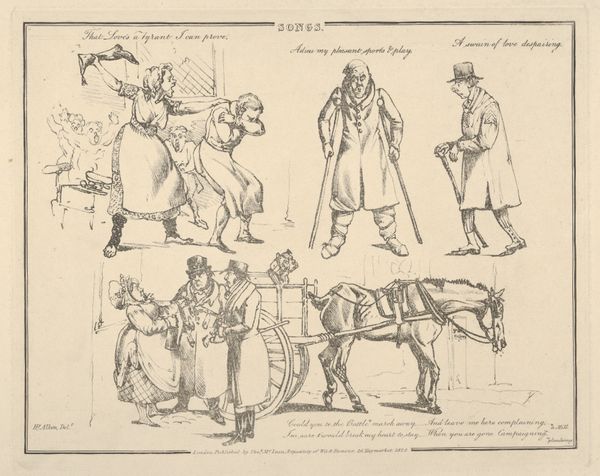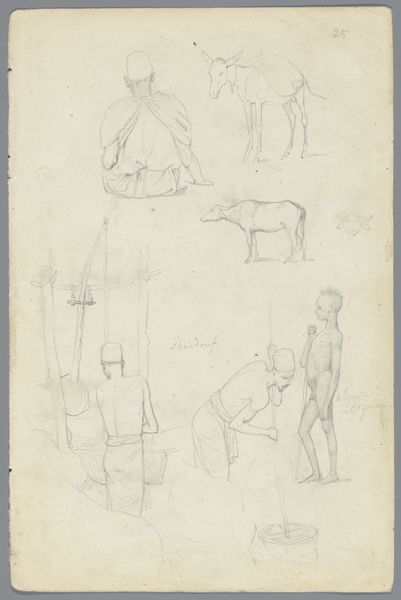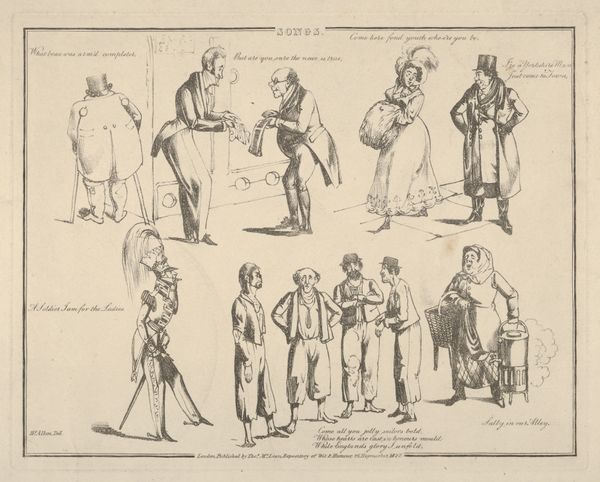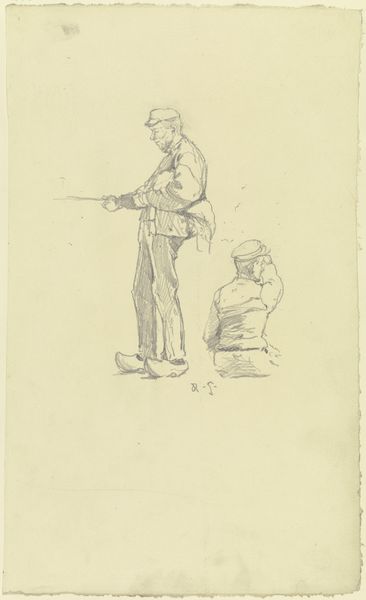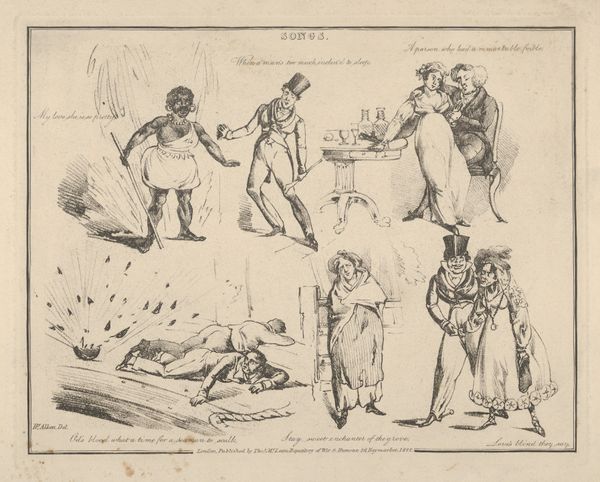
Five images showing the processes of manufacturing glass 1800 - 1900
0:00
0:00
drawing, print, pencil
#
drawing
# print
#
pencil sketch
#
landscape
#
pencil
#
genre-painting
#
history-painting
Dimensions: sheet: 9 1/8 x 7 1/2 in. (23.2 x 19.1 cm)
Copyright: Public Domain
Editor: This is "Five images showing the processes of manufacturing glass," a pencil drawing from between 1800 and 1900 by an anonymous artist. It gives us glimpses into a glassmaking workshop. It's interesting to see what that industrial labor looks like through art. How do you see this piece fitting into its historical context? Curator: Well, the depiction of labor in art during the 19th century often served various political and social agendas. Images like this became important in visualizing industrial progress, or perhaps, subtly commenting on the conditions of labor. The absence of the artist’s signature is curious. Was this piece intended for public display, or a more private, perhaps technical, record? Editor: It's like visual documentation, before photography became widespread. What can we read into it being unsigned? Curator: The lack of signature makes its function ambiguous. Perhaps commissioned by a factory owner as a record, or maybe even created as part of an educational series intended to inform a broader public about manufacturing processes. Do you notice any idealization or critique in how the workers are portrayed? Editor: They seem rather neutral, neither glorified nor vilified. More like types than individuals. It raises questions about who the intended audience was and what the artist wanted to communicate. Curator: Precisely. This neutrality itself speaks volumes about the changing social landscape, the rise of industry, and how that period grappled with representing labor. It would be important to analyze more broadly its connection with the distribution networks, such as newspapers. Were these images popularized in dailies at the time? The Metropolitan Museum may have records in their files. Editor: That's something I hadn't considered – its potential distribution in media! This really opens up new perspectives on how art engages with history. Thanks! Curator: Indeed. It is always crucial to think about an artwork’s position within the larger network of image production and circulation to understand its public role and cultural significance. I learned a great deal with your questions as well.
Comments
No comments
Be the first to comment and join the conversation on the ultimate creative platform.
